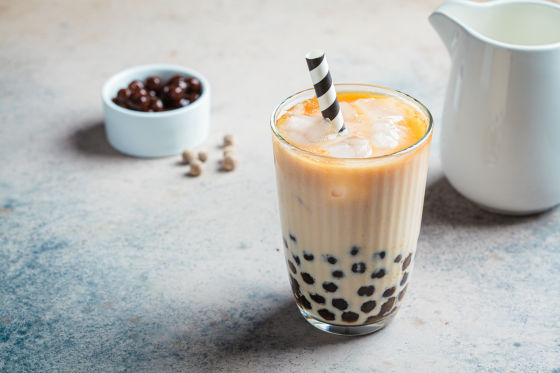What are the hidden risks of bubble tea, which is popular in Europe and the United States?

Bubble tea, a Taiwanese drink made with sweetened milk tea and large
Bubble tea's dark side: from lead contamination to kidney stones
https://theconversation.com/bubble-teas-dark-side-from-lead-contamination-to-kidney-stones-266299

Although bubble tea is less common in Japan than it was in its heyday, Taylor says there are as many bubble tea shops as coffee shops in busy areas of the UK. However, recent research has shown that there are some things to be careful about when it comes to bubble tea.
A study conducted in the United States found that some tapioca teas contain high levels of lead. Tapioca is a starch made from the rhizome of a plant called cassava , which easily absorbs heavy metals such as lead from the soil, so tapioca made from it may also contain heavy metals.
Additionally, because tapioca is starchy, eating too much can lead to gastroparesis, a condition that delays food elimination from the stomach. In 2025, a case was reported in which a 10-year-old child developed a gastric blockage after drinking bubble tea.
Both gastroparesis and stomach blockages can cause nausea and abdominal pain, and those with slow digestion may experience more severe symptoms. Guar gum, a thickening agent sometimes added to tapioca, can also cause constipation if consumed in excess, Taylor says.

Bubble tea is known to affect not only gastrointestinal health but also kidney health. In 2023, a 20-year-old Taiwanese woman who drank bubble tea instead of water complained of back pain and had doctors
While the above case is quite extreme, it has been pointed out that even a small amount of tapioca can cause children to choke and suffocate . The same is true for adults, and in Singapore, a 19-year-old woman was reported to have choked on three pieces of tapioca when she sucked them down with force from a straw .
Additionally, a typical bubble tea contains 20-50g of sugar per cup, which is equal to or greater than the sugar content of a can of Coca-Cola (35g). A Taiwanese study found that children who regularly drank bubble tea by age 9 had a 1.7 times higher risk of developing cavities in their permanent teeth , and in California, the bubble tea trend is said to be contributing to youth obesity . Taylor points out that because bubble tea is high in sugar and fat, drinking too much increases the risk of type 2 diabetes, obesity, metabolic disease, and fatty liver.
Surprisingly, some studies have suggested a potential link between bubble tea and mental health. A study of Chinese children who frequently drank bubble tea found a link between bubble tea consumption and anxiety and depression, while a study of Chinese nurses found that regular bubble tea consumption was associated with anxiety, depression, fatigue, job burnout, and reduced well-being. The study also found an association between reduced bubble tea consumption and reduced suicidal ideation, although the causal relationship is unclear.
One of the strange effects of bubble tea is that tapioca balls can appear in internal organ scans when diagnosing car accidents or appendicitis . Because tapioca balls are denser than surrounding tissue and exhibit properties similar to kidney stones and gallstones, doctors may misdiagnose them. In the scan below, you can see tapioca balls in the area indicated by the arrow.

Taylor argues that bubble tea should not be banned just because of the problem, but should only be enjoyed occasionally rather than every day. He also advises that when drinking bubble tea, drinking directly from the cup rather than sucking forcefully through a straw makes it easier to control the tapioca in your mouth and avoids the risk of choking.
Related Posts:
in Free Member, Science, Food, Posted by log1h_ik







